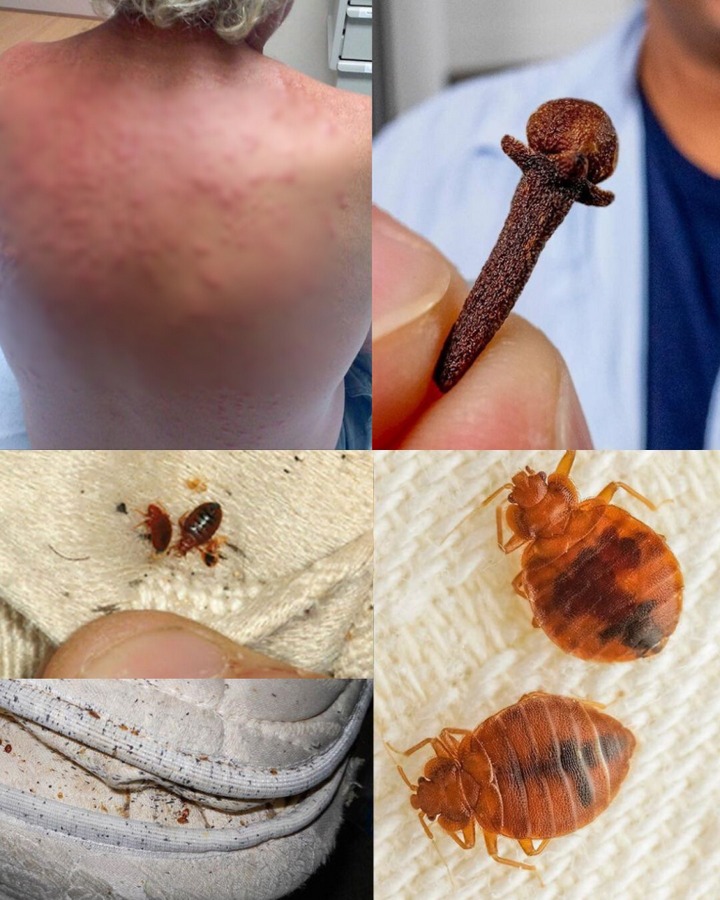Natural Solutions for Bed Bug Control: The Power of Diatomaceous Earth vs. the Myth of Cloves…
Dealing with a bed bug infestation can feel like an uphill battle, but natural remedies can offer effective relief while avoiding harsh chemicals. One such remedy, diatomaceous earth (DE), has gained popularity as a non-toxic, chemical-free way to tackle bed bugs. While there is some talk about using cloves as a natural repellent, their effectiveness in dealing with bed bugs doesn’t have solid scientific backing. In this guide, we’ll dive into the proper use of DE and also explore the role of cloves in general pest management.
Why Diatomaceous Earth is Your Best Friend in the Battle Against Bed Bugs
Diatomaceous earth is a fine, powdery substance made from the fossilized remains of aquatic organisms called diatoms. When bed bugs come into contact with DE, it works by absorbing the oils and fats from their exoskeletons, leading to dehydration and death. The beauty of DE lies in its ability to target insects without using toxic chemicals, making it safe for homes with children and pets, as long as food-grade DE is used.
Important Note: DE is non-toxic, but the fine dust can irritate the lungs, so always handle it with care and avoid inhaling it.

How to Use Diatomaceous Earth for Bed Bugs
Step 1: Clean and Prepare the Area
Before applying DE, start by thoroughly vacuuming all surfaces where bed bugs are hiding, including mattresses, bed frames, carpets, and furniture. This will help eliminate visible bed bugs and their eggs. Dispose of the vacuum bag immediately or clean the canister to avoid reintroducing the bugs.
Step 2: Apply Food-Grade DE
Lightly sprinkle food-grade DE around areas where bed bugs are likely to hide, such as the bed frame, under furniture, and in cracks or crevices. Be sure to pay extra attention to baseboards, electrical outlets, and carpet edges where bugs often lurk.
Step 3: Let It Sit
Allow the DE to sit undisturbed for 5–7 days. This is crucial for the DE to effectively work its magic. During this period, refrain from cleaning or disturbing the treated areas.
Step 4: Clean and Reapply if Necessary
After the waiting period, vacuum the DE along with any dead insects. If signs of bed bugs persist, reapply the DE and continue the treatment every 7–10 days until the infestation is completely gone.
The Clove Conundrum: Do They Really Repel Bed Bugs?
Cloves are often touted as a natural pest repellent due to their eugenol content, which has insect-repelling properties. Many people use clove sachets or clove oil in an attempt to deter pests. However, when it comes to bed bugs, there is minimal scientific evidence to support the claim that cloves are effective in repelling or eliminating them.
So, Should You Use Cloves?
While cloves can serve as a pleasant-smelling deterrent for some insects, they should not be considered a primary solution for bed bug infestations. Their use can be a helpful complement to other pest control methods, but they are unlikely to solve a bed bug problem on their own.
- Using Cloves for General Pest Control
If you’d still like to use cloves for pest management, here are a few methods that may help with general bug control: - Clove Sachets
Fill small fabric sachets with whole cloves or clove powder and place them in drawers, closets, and under furniture. This can help deter some pests like moths or ants, though it won’t be effective against bed bugs. - Clove Oil Spray
Mix 10–15 drops of clove essential oil with one cup of water in a spray bottle. Lightly mist areas such as doorways, windowsills, and other potential entry points for pests. While this may help with general pest control, it won’t necessarily be a solution for an established bed bug problem.
A Balanced Approach: Combining Natural and Professional Solutions
While diatomaceous earth is a well-established, non-toxic solution for dealing with bed bugs and other crawling insects, cloves do not hold up as an effective repellent for these pests. If you’re dealing with a bed bug infestation, using DE is a proven method, and if the problem persists, it’s wise to seek professional pest control assistance. Combining natural remedies like DE with expert help offers the best chance for a pest-free home.
By taking a holistic approach to pest control—incorporating natural solutions and professional services when necessary—you can protect your home from bed bugs while maintaining a chemical-free environment.


